Using Ronald Nash’s book as a starting point, Don Closson looks at the philosophical foundations of modern education in America and how they have contributed to low performance.
Every once in a while a book is written that shakes things up. The Closing of the American Mind, written by the now-deceased University of Chicago professor Allan Bloom in the late 1980s, was just such a book. You can tell that a book strikes a sensitive societal chord when numerous books follow with similar titles. Some experts hated it, others loved it. And it seemed that everyone was talking about it. What made this book so interesting was that it was written for a very small audience of academicians, and yet it attracted the attention of millions and became a bestseller. Even more amazing, it’s a book about education.
 Dr. Bloom’s book reignited a long and important discussion about the content and purpose of education. Here at Probe, we felt that both the book and the topic it discussed were so important that we needed to add to the conversation with a book of our own. The result was a book titled The Closing of the American Heart. We asked Dr. Ronald Nash, also now deceased, who taught philosophy at the University of Kentucky, to write it for us. I had the privilege of providing some of the research for the book.
Dr. Bloom’s book reignited a long and important discussion about the content and purpose of education. Here at Probe, we felt that both the book and the topic it discussed were so important that we needed to add to the conversation with a book of our own. The result was a book titled The Closing of the American Heart. We asked Dr. Ronald Nash, also now deceased, who taught philosophy at the University of Kentucky, to write it for us. I had the privilege of providing some of the research for the book.
Both books are an attempt to uncover the root causes of the many problems facing our public schools. In this article we will consider the critiques given by the two authors as well as their proposed solutions. One concept that runs throughout both books is that ideas have consequences. Allan Bloom writes that “a serious life means being fully aware of the alternatives,Using Ronald Nash’s book as a starting point, Probe’s Don Closson looks at the philosophical foundations of modern education in America and how they have contributed to low performance. thinking about them with all the intensity one brings to bear on life‑and‑death questions, in full recognition that every choice is a great risk with necessary consequences that are hard to bear.”{1} This statement relates directly to the educational enterprise. Someone must decide what it means to be an educated person and consequently what students should know and believe when they are graduated from our schools.
Nash argues that this decision—about what it means to be educated—will be based on an educator’s worldview. One’s worldview is built on answers to life’s big questions, answers that might be informed by traditional religious beliefs or by modern secularism. However, since everyone has a worldview, education can never be neutral regarding the “deep” things of life or life’s ultimate concerns. Nash goes one step further by asserting that all public policy is shaped by the ultimate concerns of those holding power in our culture. In other words, worldviews shape institutions and policies, which directly affect how children are educated.
Bloom and Nash agree that one worldview dominates our nation’s schools and universities. In what follows we will investigate the nature of that worldview and how these two men believed we should respond to it.
Education’s Ills
Allen Bloom’s highly influential book The Closing of the American Mind begins with the dramatic observation that “There is one thing a professor can be absolutely certain of: almost every student entering the university believes, or says he believes, that truth is relative.”{2}
Relativism is the view that truth is unknowable and that universal moral virtues do not exist. Bloom’s now famous (or infamous) description of American students rests on his observation that a single way of thinking has come to dominate our campuses. He adds that relativism has left us with only one acknowledged virtue, the virtue of tolerance or openness.
According to Bloom, this assurance that truth does not exist has gutted education and left our students with little desire to seek knowledge. The search for truth has been replaced by an “unsubstantial awareness that there are many cultures.” Since cultures have different values, truth must not exist. From this they derive the maxim that we should just get along with one another, and that no values are superior to others or worth defending. Students are left with a gentle egotism and the desire for comfort. The end result of all this is that books are no longer read as part of a hunger for truth; books have lost their significance.
Nash generally agrees with Bloom, but describes the situation a little differently. His book focuses on three areas of illiteracy among our students: functional illiteracy, cultural illiteracy, and moral illiteracy.
Functional illiteracy is the inability to understand the written word well enough to thrive within our modern culture. The National Assessment of Educational Progress test in 2007 found that thirty-three percent of fourth graders and more than a quarter of eight graders scored below basic levels in reading.{3} What makes this distressing is the fact that per pupil expenditures have more than doubled since 1970 while achievement has remained flat.
The problem isn’t just in our primary and secondary schools. Poet and university professor Karl Shapiro writes that “What is really distressing is that this generation cannot and does not read. I am speaking of university students in what are supposed to be our best universities.”{4} It’s also estimated that 30 million America adults can be considered to be functionally illiterate.{5}
Bloom and Nash argue that the prevailing functional illiteracy and the loss of interest in books is not a chance occurrence. Nash believes that it is the result of a change in the way the West thinks about truth and human nature, as well as the abandonment of a Christian worldview.
Education’s Ills cont.
In addition to students who can’t read, or functional illiteracy, there are those who can read but are unable to interpret the meaning of the material because they lack the necessary background information. E. D. Hirsch is the best known author on what has become known as cultural illiteracy.
In his book The Schools We Need, Hirsch argues that “just as it takes money to make money, it takes knowledge to make knowledge.”{6} He contends that those children who begin school with an adequate level of intellectual capital have a framework upon which further learning may be built. But those who lack the necessary educational experiences and sufficient vocabulary tend to fall further and further behind. Not just any information serves as intellectual capital. According to Hirsch, the knowledge taught and learned must be of a type that “constitutes the shared intellectual currency of the society,” or put another way, “intellectual capital has to be the widely useful and negotiable coin of the realm.”{7}
Nash agrees with Hirsch and charges that modern educational theory deserves much of the blame for causing cultural illiteracy. Hirsch argues that educators often believe that “a child’s intellectual and social skills will develop naturally without regard to the specific content of education.”{8} Educators are more interested in how children learn rather than what they learn. Because of this, children fail to store away enough information to become culturally literate.
Some educators will grudgingly admit to the problems of functional and cultural illiteracy, and even assume some of the blame, but they are proud of the decline in what Nash calls moral illiteracy. Nash sees the problem of moral illiteracy as a conflict between those who are religious and support traditional values and those who are secular and advocate anti‑traditional or modernist values. Those in the midst of the battle understand this conflict, while the typical American often does not.
John Silber, past president of Boston University writes,
In generations past, parents were more diligent in passing on their principles and values to their children, and were assisted by churches and schools which emphasized religious and moral education. In recent years, in contrast, our society has become increasingly secular and the curriculum of the public schools has been denuded of almost all ethical content. As a result universities must confront a student body ignorant of the evidence and arguments that underlie and support many of our traditional moral principles and practices.{9}
Three Philosophies
Nash describes three distinct philosophical ideas that have resulted in the decline in functional, cultural, and moral literacy in America.
The first of these ideas is relativism, which we mentioned earlier. It describes the conviction that there is no such thing as truth. This idea is almost universally accepted among both students and teachers on our campuses. It’s often defended with the argument “that might be true for you, but it isn’t for me.” As Nash points out, this kind of thinking is the result of confusing the veracity of a proposition with one’s personal judgment regarding that truth claim. Nash writes, “We may differ in our judgment about what is true, but that does not affect the truth of the matter itself.”{10} Relativism itself is making a truth claim about knowledge which is self-defeating. Are we to accept the relativist’s statement that there is no truth to be “really true?”
The second idea is positivism, an arrogant, quasi‑religious devotion to the scientific method. A positivist argues that any belief that cannot be tested by science is irrational. Positivism relegates all of theology and most of ethics to mere opinion or personal preference. However, as philosopher J. P. Moreland has argued, faith in science itself must be defended on a metaphysical basis and cannot be proven scientifically. “The aims, methodologies, and presuppositions of science cannot be validated by science. One cannot turn to science to justify science any more than one can pull oneself up by his own bootstraps.”{11}
Positivism often turns out to be based on hidden assumptions, assumptions that make up the third idea (or set of ideas) Nash blames the current state of American education on. This third movement has sometimes been labeled the bootleg religion of American education; a mixture of secularism, naturalism, and humanism. The assumptions of this faith include (1) the absence of a transcendent God, (2) the non‑existence of anything outside of the physical universe, and (3) the acceptance of the self‑actualization of each human being— complete autonomy—as the purpose of life. What makes this set of ideas especially dangerous is that they are presented as being neutral and not in violation of separation of church and state sensitivities.
As a result, some educators consider their students maladjusted or worse if they hold to a worldview that conflicts with these principles. On some campuses, especially at the university level, the monopoly that these ideas enjoy has resulted in Christian thought being systematically filtered out of the curriculum.
Two Solutions
Allen Bloom makes one major recommendation to combat the relativism that is destroying the desire for knowledge in our schools, he writes:
[T]he only serious solution is the one that is almost universally rejected: the good old Great Books approach, in which a liberal education means reading certain generally recognized classic texts, just reading them, letting them dictate what the questions are and the method of approaching them—not forcing them into categories we make up, not treating them as historical products, but trying to read them as their authors wished them to be read.{12}
Bloom argues that even when these books are read today they are often viewed through the radical lenses of feminism or Marxism. Everything is deconstructed, every idea is neutralized.
Nash agrees that the Great Books are valuable and contribute to a complete education, but he argues that the array of ideas contained in them will baffle students unless they have an over‑arching philosophy to guide them through the maze. Although Bloom acknowledges the necessity for individuals and schools to make the hard choices about the big questions in life, he himself fails to do this in regards to a curriculum. Should teachers treat all of the Great Books equally? Since the authors disagree intensely on basic issues regarding the nature of reality and humanity, are we not promoting a new relativism in place of the old? For instance, do we accept Augustine’s Confessions and his views on the sinfulness of mankind, or Rousseau’s Confessions, which assumes that humans are naturally good?
Nash contends that one condition of being an educated person is that he or she develops a single, consistent worldview, something not found in the Great Books. From a Christian perspective, only Christian theism can accomplish the task adequately.
Human beings are never neutral concerning the nature of God, and what people believe to be true about God will ultimately affect their view of education. Although Bloom talks about how modern education has impoverished the souls of today’s students, he leaves us without any indication of how those souls should be fed or what connection should be made between knowledge and virtue.
Nash believes that education would greatly benefit from true educational choice. This would empower parents to have their children educated under the worldview assumptions that correspond to their own. Putting more power into parents’ hands, thereby increasing local control of education, is one step to re-opening the American heart.
Notes
1. Bloom, Allan, The Closing of the American Mind (Simon and Schuster, 1987), 227.
3. U.S. Department of Education, Institute of Education Sciences, National Center for Education Statistics, National Assessment of Educational Progress, Reading Report Card, at nationsreportcard.gov/reading_2007/r0001.asp on 8/29/2009.
4. Nash, Ronald, The Closing of the American Heart (Probe Books, 1990), 46.
5. National Center for Education Statistics, “2003 National Assessment of Adult Literacy,” U.S. Department of Education, Institute of Education Sciences, at nces.ed.gov/naal/index.asp on 8/29/2009.
6. Hirsch, E.D., Jr. The Schools We Need: And Why We Don’t Have Them (New York: Doubleday, 1996), 20.
8. Nash, The Closing of the American Heart, 50.
12. Bloom, The Closing of the American Mind, 344.
© 2009 Probe Ministries

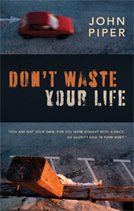
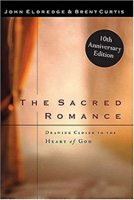 The Sacred Romance: Drawing Closer to the Heart of God
The Sacred Romance: Drawing Closer to the Heart of God 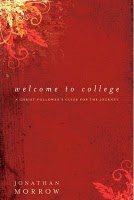 Welcome to College: A Christ-follower’s Guide for the Journey
Welcome to College: A Christ-follower’s Guide for the Journey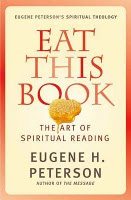 Eat This Book: The Art of Spiritual Reading
Eat This Book: The Art of Spiritual Reading 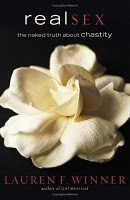 Real Sex: The Naked Truth about Chastity
Real Sex: The Naked Truth about Chastity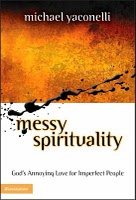 Messy Spirituality: God’s Annoying Love for Imperfect People
Messy Spirituality: God’s Annoying Love for Imperfect People 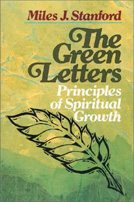
 5 Paths to the Love of Your Life: Defining Your Dating Style
5 Paths to the Love of Your Life: Defining Your Dating Style 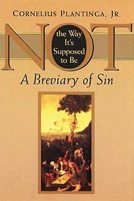 Not the Way It’s Supposed to Be: A Breviary of Sin
Not the Way It’s Supposed to Be: A Breviary of Sin